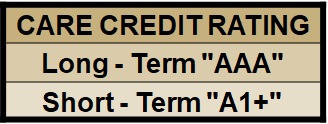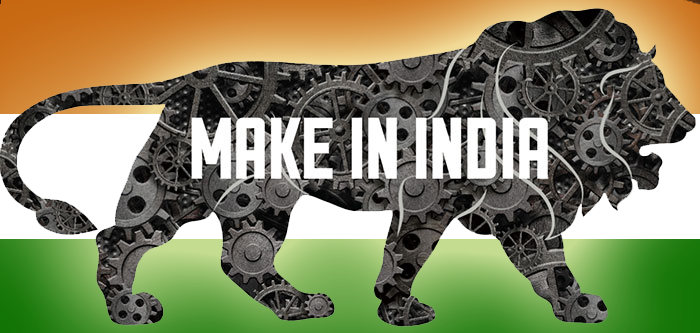What is GST? How does it work?
GST is a single indirect tax for the whole nation, which has subsumed multiple taxes thus making India one unified common market.
GST is a single tax on the supply of goods and services, right from the manufacturer to the consumer. Credits of input taxes paid at each stage will be available in the subsequent stage of value addition, which makes GST essentially a tax only on value addition at each stage. The final consumer will thus bear only the GST charged by the last dealer in the supply chain, with set-off benefits at all the previous stages.
How is GST structured in India?
Keeping in mind the federal structure of India, there will be two components of GST – Central GST (CGST) and State GST (SGST). Both Centre and States will simultaneously levy GST across the value chain and GST will be levied on every supply of goods and services. Centre would levy and collect Central Goods and Services Tax (CGST), and States would levy and collect the State Goods and Services Tax (SGST) on all transactions within a State. The input tax credit of CGST would be available for discharging the CGST liability on the output at each stage and then IGST . Similarly, the credit of SGST paid on inputs would be allowed for paying the SGST & then IGST on output. Credit of IGST paid on inputs will be available for paying IGST, CGST & SGST. No cross utilization of credit would be permitted.
Which taxes at the Centre and State level are being subsumed into GST?
At the Central level, the following taxes are being subsumed:
- Central Excise Duty,
- Additional Excise Duty,
- Service Tax,
- Additional Customs Duty commonly known as Countervailing Duty, and
- Special Additional Duty of Customs.
At the State level, the following taxes are being subsumed:
- Subsuming of State Value Added Tax/Sales Tax,
- Entertainment Tax (other than the tax levied by the local bodies), Central Sales Tax (levied by the Centre and collected by the States),
- Octroi and Entry tax,
- Purchase Tax,
- Luxury tax, and
- Taxes on lottery, betting and gambling.
How would a particular transaction of goods and services be taxed simultaneously under Central GST (CGST) and State GST (SGST)?
The Central GST and the State GST would be levied simultaneously on every transaction of supply of goods and services except on exempted goods and services, goods which are outside the purview of GST and the transactions which are below the prescribed threshold limits. Presently, exemption limit is fixed at Rs.5,000/- per day per transaction either supply ogf goods or services by a business entity. Further, both would be levied on the same price or value unlike State VAT which is levied on the value of the goods inclusive of Central Excise.
How will be Inter-State Transactions of Goods and Services be taxed under GST in terms of IGST method?
In case of inter-State transactions, the Centre would levy and collect the Integrated Goods and Services Tax (IGST) on all inter-State supplies of goods and services. The importing dealer will claim credit of IGST while discharging his output tax liability (both CGST and SGST) in his own State.
How will IT be used for the implementation of GST?
For the implementation of GST in the country, the Central and State Governments have jointly registered Goods and Services Tax Network (GSTN) as a not-for-profit, non-Government Company to provide shared IT infrastructure and services to Central and State Governments, tax payers and other stakeholders. The key objectives of GSTN are to provide a standard and uniform interface to the taxpayers, and shared infrastructure and services to Central and State/UT governments.
GSTN is the common GST portal providing frontend services of registration, returns and payments to all taxpayers, as well as the backend IT modules for certain States that include processing of returns, registrations, audits, assessments, appeals, etc. All States, accounting authorities, RBI and banks, are also preparing their IT infrastructure for the administration of GST.
There would no manual filing of returns. All taxes can also be paid online. All mis-matched returns would be auto-generated, and there would be no need for manual interventions. Most returns would be self-assessed.
How will imports be taxed under GST?
IGST will be levied on all imports into the territory of India. The Additional Duty of Excise or CVD and the Special Additional Duty or SAD presently being levied on imports will be subsumed under GST. However, petroleum products like Petrol, Diesel and ATF will be outside the purview of GST and will continue to attract CVD/SAD/VAT.
What are the major features of the registration procedures under GST?
The major features of the proposed registration procedures under GST are as follows:
- Existing dealers: Existing VAT/Central excise/Service Tax payers need not to apply a fresh for registration under GST.
- New dealers: Single application to be filed online for registration under GST.
- The registration number is PAN based and serves the purpose for Centre and State.
- Unified application to both tax authorities.
- Each dealer to be given unique ID GSTIN.
- Deemed approval within three days.
- Post registration verification in risk based cases only.
What details will be required by Goa Shipyard Ltd from vendors?
All suppliers/vendors are requested to furnish GST provisional ID No, Provisional ID Certificate and HSN/SAC No. of the items under procurement / order to Commercial/Purchase section. Alternatively, details can be also submit the GST Cell (format can be download through GSL website >GST>GSL Vendor Details Template).
What other actions would be required from vendors?
Vendors has to timely raise invoices, file monthly and yearly returns as per GST Law flawlessly to avail ITC benefits.
What is GSL’s GST provisional ID ?
GSL’s Provisional ID is 30AAACG7569F1ZR.
Whether GSL has constituted any GST Cell to look after the grievances related to GST compliance for suppliers/ vendors.
A GST Facilitation cell has been set up in the Goa Shipyard Limited to answer queries from businesses and clients regarding GST. The GST facilitation cell is headed by Shri Prasanna Sahu, Deputy General Manager – Finance (Email: psahu[at]goashipyard[dot]com, Tel : +91-832 2512152 – Extn-2415, +91-832-2513153. Direct Line).
How will GST benefit the exporters?
The subsuming of major Central and State taxes in GST, complete and comprehensive setoff of input goods and services and phasing out of Central Sales Tax (CST) would reduce the cost of locally manufactured goods and services. This will increase the competitiveness of Indian goods and services in the international market and give boost to Indian exports. The uniformity in tax rates and procedures across the country will also go a long way in reducing the compliance cost.
What is GST rate for GSL products & services?
HSN code and SAC Code for GSL’S Products and services are given as under:
| S.No. | HSN Code/SAC | Description of Goods & Services | GST Rate |
|---|---|---|---|
| 1 | 8901 | Construction of Boats, Ships, Barges,Launches,Tanker and Research Ship | 5% |
| 2 | 8902 | Construction of Fishing Vessels | 5% |
| 3 | 8903 | Yatchs and other vessels for pleasure or sports, rowing boats including floating structures used for casinos | 28% |
| 4 | 8904 | Construction of Tugs | 5% |
| 5 | 8905 | Construction of Light-vessels, dredgers and other vessels | 5% |
| 6 | 8906 | Construction of Other vessels, including warships and lifeboats | 5% |
| 7 | 9954 | (i) Construction of a complex, building, civil structure or a part thereof, including a complex or building intended for sale to a buyer, wholly or partly, except where the entire consideration has been received after issuance of completion certificate, where required, by the competent authority or after its first occupation, whichever is earlier. (Provisions of paragraph 2 of this notification shall apply for valuation of this service | 18% |
| (ii) Composite supply of works contract for construction of Nuclear, Biological Chemical Training Facility (NBCTF) and Damage Control Training Facility (DCTF) structure as defined in clause 119 of section 2 of Central Goods and Services Tax Act, 2017. | |||
| iii) Construction services other than (i) and (ii) above. | |||
| 8 | 9987 | Maintenance, repair and installation (except construction) services | 18% |
| Annual Maintenance of SBTF and ADA -with or without use of labour and materials. | |||
| Annual Maintenance of MHA Boats- with or without use of labour and materials. | |||
| Annual Maintenance of Maharastra Boats-with or without use of labour and materials. | |||
| Annual Maintenance of DCTF Lonavla (Fixed Structure) -with or without use of labour and materials. | |||
| Dry Docking Services | |||
| Berthing Services | |||
| Unberthing Services | |||
| Chemically cleaning the ship machinery and testing the pressure of the machinery | |||
| Ship Repair Services -with or without use of labour and materials. | |||
| Imparting training to Ship staff including on NBCTF |







